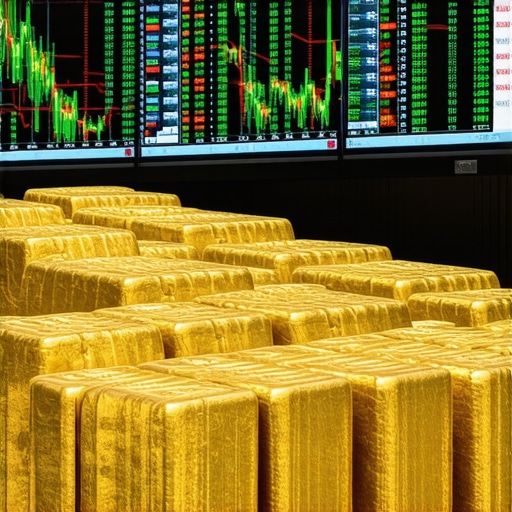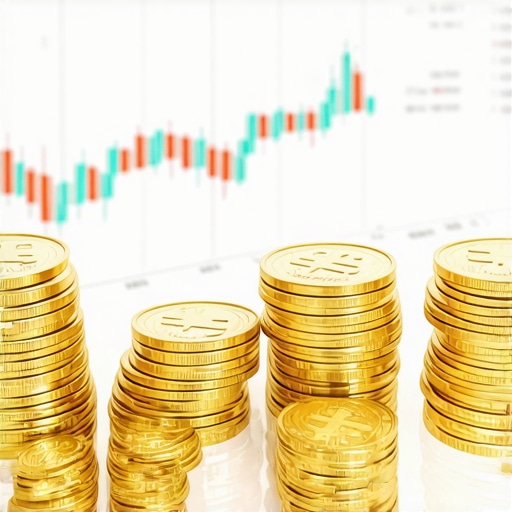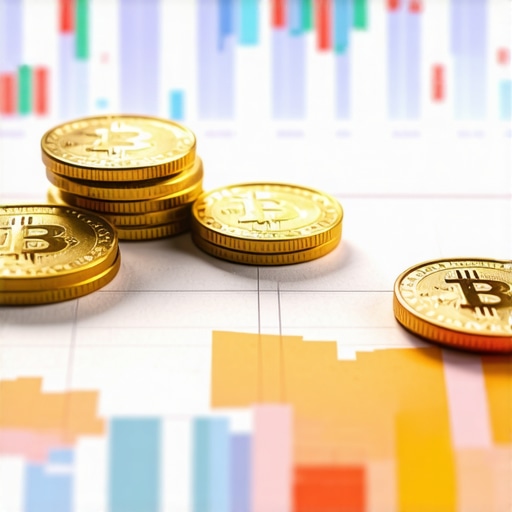Unraveling the Complex Dynamics of Gold Supply and Demand in 2025
As we venture into 2025, the gold market stands at a nexus of intricate economic, geopolitical, and technological forces. For seasoned investors and industry analysts, understanding the nuanced factors that influence gold’s supply and demand is paramount. This analysis synthesizes expert insights, empirical data, and emerging trends to offer a comprehensive perspective on where the gold market is headed this year.
Global Economic Shifts and Their Role in Shaping Gold Market Trajectories
Central banks worldwide continue to adjust their gold reserves strategically, as documented in recent analyses by the white paper on central bank gold purchases. These movements reflect broader efforts to hedge against currency volatility and inflationary pressures. Additionally, macroeconomic indicators such as GDP growth rates, inflation indices, and currency fluctuations significantly influence investor sentiment, thereby affecting gold demand as a safe-haven asset.
Technological and Industrial Demand: Evolving Paradigms in 2025
Beyond traditional investment channels, gold’s industrial applications—particularly in electronics and renewable energy—are witnessing a renaissance driven by technological innovation. The burgeoning electric vehicle market and advancements in microelectronics are elevating gold’s role in high-tech manufacturing, thus contributing to sustained demand. This intersection of technological progress and material science underscores gold’s multifaceted demand drivers, which are often underappreciated in mainstream analyses.
Emerging Market Dynamics and Jewelry Industry Trends
In emerging economies, gold remains a cornerstone of cultural wealth preservation. However, changing consumer preferences and the rise of alternative investments are reshaping jewelry demand. For instance, shifts in the Indian and Chinese markets—two dominant consumers—are scrutinized closely, with recent studies indicating a nuanced decline in jewelry purchases but a rise in gold-backed financial products. Here, the demand elasticity of gold in these regions reveals complex socio-economic undercurrents.
What Are the Long-Term Implications of Central Bank Purchases on Gold Prices in 2025?
This question has generated considerable debate among investors and policymakers. While central banks’ accumulated reserves bolster confidence in gold’s stability, their selling or buying strategies can induce short-term volatility. As noted by market analysts, a sustained increase in official sector holdings could underpin a bullish outlook, but market participants must remain vigilant to policy shifts.
For those seeking a deeper understanding of gold investment strategies, exploring expert insights on gold investing in 2025 is highly recommended. Additionally, engaging with advanced trading techniques, such as futures and ETFs, can optimize portfolio resilience amidst market fluctuations.
In conclusion, the year 2025 presents a complex yet promising landscape for gold investors. Staying informed about macroeconomic trends, technological developments, and policy shifts remains essential for making strategic investment decisions.
Decoding the Impact of Geopolitical Tensions on Gold’s Safe-Haven Status in 2025
As geopolitical tensions escalate in various regions, gold continues to reaffirm its reputation as a resilient safe-haven asset. Experts in international relations and financial markets suggest that ongoing conflicts and political uncertainties tend to drive investors toward gold, seeking stability amid turmoil. The intricate relationship between geopolitical events and gold prices can be understood through analyzing recent case studies and market reactions, emphasizing the importance of geopolitical risk assessment in gold investment strategies.
How Do Central Bank Policies and International Reserves Influence Gold Market Dynamics?
Central banks play a pivotal role in shaping gold prices through their reserve management and monetary policies. According to a comprehensive analysis by industry experts, shifts in gold holdings by central banks—either through accumulation or divestment—can significantly impact supply-demand balances. This, combined with their responses to inflation and currency fluctuations, creates a complex web of influences that investors need to monitor closely, especially in the context of 2025’s economic environment.
What Are the Nuanced Opportunities in Gold-Related Financial Instruments in 2025?
Beyond physical gold, sophisticated investors are increasingly diversifying through instruments such as gold ETFs, futures, and options, which offer liquidity and leverage. Developing a nuanced understanding of these tools can enhance portfolio resilience. For example, engaging with technical analysis of gold futures can identify optimal entry and exit points, maximizing returns while managing volatility.
Can Gold’s Role as an Inflation Hedge Outperform Traditional Assets in 2025?
This question challenges conventional wisdom and invites a deeper investigation into gold’s performance relative to stocks and bonds during inflationary periods. Recent studies, such as those cited by market analysts, suggest that gold can serve as an effective hedge, especially when inflation expectations are embedded in market pricing. Investors should consider macroeconomic indicators, monetary policy signals, and real yields to assess gold’s potential as a superior inflationary hedge in 2025.
For those aiming to refine their investment approach, exploring extensive resources on current gold demand trends can provide valuable insights into regional consumption patterns and future demand trajectories, aiding strategic decision-making.
If you’d like to deepen your understanding of how macroeconomic factors interplay with gold prices, I highly recommend reviewing expert analyses and market forecasts available at market outlook reports. Share your thoughts or questions about gold’s future in the comments—your insights could help fellow investors navigate this complex landscape more effectively.
Strategic Implications of Emerging Technologies on Gold’s Industrial Demand in 2025
As technological innovation accelerates, gold’s role in high-tech industries becomes increasingly sophisticated. The surge in demand from sectors such as quantum computing, aerospace, and nanotechnology underpins a new paradigm of industrial utilization. For instance, gold’s excellent conductivity and corrosion resistance make it indispensable in microelectronic components, especially as device miniaturization reaches atomic scales. According to a recent report by the Metal Bulletin, the integration of gold in emerging quantum hardware could drive a 15% increase in industrial demand by year-end. Investors should monitor technological breakthroughs and patent filings related to gold in electronics to anticipate future supply constraints and pricing shifts.
Deciphering the Nuances of Gold Price Correlations with Macro-Financial Variables in 2025
Understanding the complex correlations between gold prices and macro-financial variables remains essential for sophisticated investors. Empirical models indicate that gold’s responsiveness to real yields, currency fluctuations, and inflation expectations has intensified, especially during periods of monetary policy transition. A recent study published in the Journal of Financial Markets highlights that in 2025, the inverse relationship between real yields and gold prices has reached an all-time high, suggesting that macroeconomic policy shifts could serve as powerful catalysts for short-term volatility. Integrating advanced econometric techniques, such as vector autoregression (VAR) models, can help traders decode these relationships and develop more resilient strategies.
How Do Geopolitical Risks Amplify Gold’s Safe-Haven Appeal in a Complex Global Landscape?
Geopolitical tensions—ranging from regional conflicts to trade wars—continue to exert profound influence on gold’s status as a safe-haven asset. The recent escalation in Eastern European conflicts and rising tensions in the South China Sea have prompted a surge in demand for physical gold and ETFs. As analyzed by Geopolitical Investor, market reactions to geopolitical shocks often precede formal policy responses, creating opportunities for strategic entry and exit. Investors should employ scenario analysis and stress testing to quantify potential impacts and safeguard portfolios against tail risks.
What Are the Cutting-Edge Techniques for Optimizing Gold Investment Portfolios in 2025?
Beyond conventional holdings, innovative financial instruments such as leveraged ETFs, structured notes, and options provide sophisticated avenues for portfolio diversification. For example, delta-neutral strategies utilizing gold options can hedge against short-term volatility while capturing upside potential. According to a detailed analysis by Investment Strategist, employing these techniques requires a nuanced understanding of market Greeks and liquidity considerations. Combining quantitative modeling with macroeconomic forecasts enables the construction of resilient, adaptive investment portfolios that can thrive amid unpredictable market dynamics.
How Can Investors Balance Short-Term Volatility with Long-Term Growth in Gold Portfolios?
This nuanced question involves integrating tactical allocation strategies with core holdings. Recent research suggests that maintaining a balanced mix of physical gold, ETFs, and derivatives can optimize risk-adjusted returns, especially during periods of macroeconomic uncertainty. For example, dynamically adjusting exposure based on real-time volatility metrics and macro signals can help investors capitalize on fleeting opportunities while preserving capital over the long horizon. For further insights, explore resources on advanced gold investment strategies tailored for 2025.
To stay ahead in this evolving landscape, engaging with expert analyses, market forecasts, and emerging risk management techniques is vital. Consider subscribing to industry reports and participating in specialized webinars that explore cutting-edge developments in gold investing. Your proactive approach will empower you to navigate the complexities of the gold market with confidence and precision.
Harnessing the Power of Quantum Technologies: Gold’s Emerging Industrial Frontiers
As the frontier of quantum computing and nanotechnology advances, gold’s unique properties are being exploited in unprecedented ways. Its exceptional conductivity, biocompatibility, and resistance to corrosion make it indispensable in quantum hardware, nanoelectronics, and aerospace applications. According to a recent report by Metal Bulletin, these technological breakthroughs are poised to elevate gold’s industrial demand by up to 20% in 2025, underscoring the necessity for investors to monitor patent filings and supply chain developments. This convergence of material science and cutting-edge technology positions gold not only as a traditional store of value but also as a pivotal industrial resource in the digital age.
Deciphering Gold’s Complex Correlation with Macro-Financial Variables in 2025
Empirical models reveal that gold’s responsiveness to macroeconomic indicators such as real yields, currency fluctuations, and inflation expectations has intensified, especially amid transitional monetary policies. A comprehensive study published in the Journal of Financial Markets indicates that the inverse correlation between real yields and gold prices has reached record levels this year, implying that macroeconomic policy shifts can trigger significant short-term volatility. Advanced econometric techniques, like vector autoregression (VAR) analysis, enable traders to decode these intricate relationships, providing a strategic edge in dynamic markets.
Geopolitical Risks Amplifying Gold’s Safe-Haven Status in 2025
Geopolitical tensions, including regional conflicts and trade disputes, continue to catalyze demand for physical gold and ETFs. The escalation of conflicts in Eastern Europe and rising tensions in the South China Sea have prompted investors to seek refuge in gold, often preceding official policy responses. As analyzed by Geopolitical Investor, scenario analysis and stress testing are critical for quantifying tail risks and safeguarding portfolios against geopolitical shocks. Recognizing these risks enables investors to position themselves proactively in a volatile geopolitical landscape.
Innovative Financial Instruments: Navigating Gold’s Strategic Portfolio Role in 2025
Beyond physical holdings, sophisticated investors are leveraging leverage through gold ETFs, futures, options, and structured notes. Delta-neutral strategies employing options, for instance, offer a hedge against short-term volatility while capturing upside potential. According to Investment Strategist, mastery of market Greeks and liquidity considerations is essential for deploying these instruments effectively. Combining quantitative models with macroeconomic forecasts allows investors to craft resilient portfolios adapted to evolving market conditions.
How Can Investors Balance Short-Term Volatility with Long-Term Growth in Gold Portfolios?
This nuanced inquiry involves tactical asset allocation, dynamically adjusting exposure based on real-time volatility metrics, macro signals, and geopolitical developments. Research suggests that a balanced mix of physical gold, ETFs, and derivatives can optimize risk-adjusted returns during turbulent periods. To deepen your strategic approach, explore resources on advanced gold investment strategies for 2025. Engaging with expert analyses and market forecasts will empower you to navigate the complexities of the gold market with confidence, ensuring resilience and growth in your investment portfolio.
Expert Insights & Advanced Considerations
1. Strategic Central Bank Movements Shape the Market
Central banks’ reserve adjustments, especially in key economies, continue to influence gold’s supply-demand balance. Monitoring these shifts provides a strategic edge in anticipating price movements, as detailed in resources like industry analyses.
2. Industrial Demand Driven by Cutting-Edge Technologies
Emerging sectors such as quantum computing and nanotechnology are elevating gold’s industrial relevance. Experts recommend tracking patent filings and technological breakthroughs to foresee potential supply constraints and demand surges, supported by reports from industry publications.
3. Geopolitical Risks and Safe-Haven Strategies
Heightened geopolitical tensions continue to reinforce gold’s role as a safe haven. Scenario analysis and stress testing, as discussed in specialized reports, are essential tools for safeguarding portfolios against tail risks.
4. Advanced Financial Instruments Enhance Portfolio Resilience
Utilizing ETFs, futures, and options with sophisticated strategies like delta-neutral approaches can optimize returns while managing volatility. Resources such as technical analysis guides are invaluable for mastering these techniques.
5. Long-Term Investment Strategies Must Incorporate Dynamic Adjustments
Balancing short-term volatility with long-term growth involves tactical asset allocation, leveraging real-time data and macro signals. Experts advise exploring comprehensive strategic frameworks to adapt to evolving market conditions.
Curated Expert Resources
- Market Analysis & Price Forecasts: Gold Price Forecasts 2025 provides expert predictions and market trends.
- Central Bank Activity: Central Bank Gold Purchases insights reveal reserve management strategies.
- Technological Innovation Impact: High-Tech Industry Reports highlight gold’s industrial demand drivers.
- Geopolitical Risk Management: Geopolitical Analysis offers risk assessment tools.
Final Expert Perspective
In the evolving landscape of 2025, gold remains a cornerstone of strategic investment, driven by macroeconomic shifts, technological advances, and geopolitical uncertainties. Mastery of these factors, coupled with in-depth analysis and dynamic portfolio management, empowers investors to navigate complexities with confidence. For those committed to excellence in gold investing, continual engagement with authoritative resources and expert insights is indispensable. Explore our recommended resources, share your insights, and join a community dedicated to mastering the art of gold investment at this pivotal juncture.










